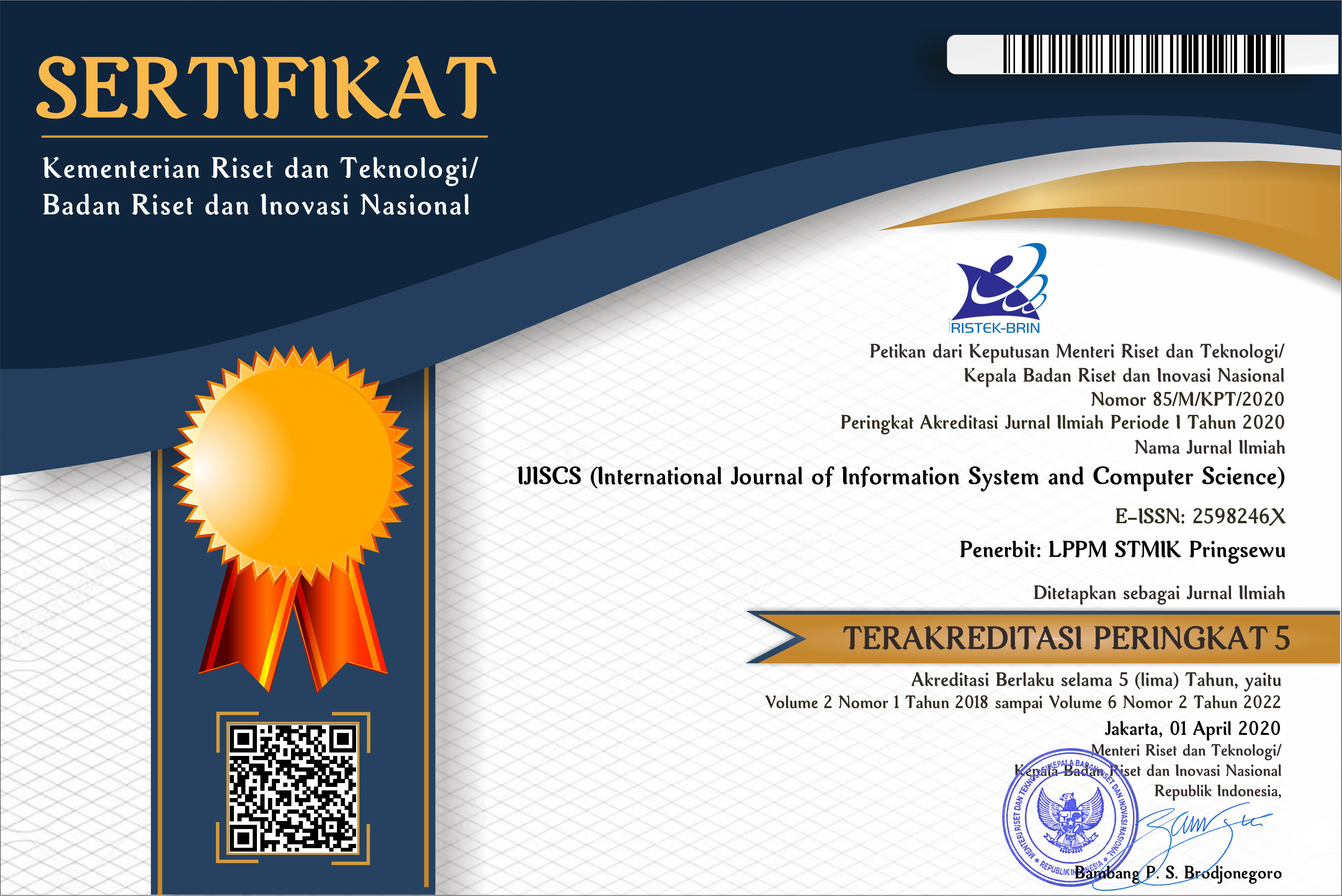THE EFFECTS OF FEATURE SELECTION METHODS ON THE CLASSIFICATIONS OF IMBALANCED DATASETS
(1) Informatic, Universitas Teknologi Digital Indonesia, Daerah Istimewa Yogyakarta
(2) Informatic, Universitas Teknologi Digital Indonesia, Daerah Istimewa Yogyakarta
 Corresponding Author
Corresponding Author
Abstract
Keywords
References
A. Ali, S. M. Shamsuddin, and A. L. Ralescu, “Classification with class imbalance problem: A review,” Int. J. Adv. Soft Comput. its Appl., vol. 7, no. 3, pp. 176–204, 2015.
S. Zhang, S. Sadaoui, and M. Mouhoub, “An Empirical Analysis of Imbalanced Data Classification,” Comput. Inf. Sci., vol. 8, no. 1, pp. 151–162, 2015, doi: 10.5539/cis.v8n1p151.
D. Mladenić and M. Grobelnik, “Feature selection for unbalanced class distribution and Naive Bayes,” Proc. Sixt. Int. Conf. Mach. Learn., no. January, pp. 258–267, 1999, doi: 10.1214/aoms/1177705148.
G. Forman, “An extensive empirical study of feature selection metrics for text classification,” J. Mach. Learn. Res., vol. 3, no. March 2003, pp. 1289–1305, 2003.
Y. Hu et al., “An Improved Algorithm for Imbalanced Data and Small Sample Size Classification,” J. Data Anal. Inf. Process., vol. 03, no. 03, pp. 27–33, 2015, doi: 10.4236/jdaip.2015.33004.
D. Tiwari, “Handling Class Imbalance Problem Using Feature Selection,” Int. J. Adv. Res. Comput. Sci. Technol., vol. 2, no. 2, pp. 516–520, 2014.
A. I. Pratiwi and Adiwijaya, “On the Feature Selection and Classification Based on Information Gain for Document Sentiment Analysis,” Appl. Comput. Intell. Soft Comput., vol. 2018, 2018, doi: 10.1155/2018/1407817.
P. P. R., V. M.L., and S. S., “Gain Ratio Based Feature Selection Method for Privacy Preservation,” ICTACT J. Soft Comput., vol. 01, no. 04, pp. 201–205, 2011, doi: 10.21917/ijsc.2011.0031.
I. Pratama, P. P.-I. JOURNALS, and undefined 2020, “Multiclass Classification with Imbalanced Class and Missing Data,” Ijconsist.Org, no. September, pp. 1–6, 2020, [Online]. Available: https://ijconsist.org/index.php/ijconsist/article/view/25.
D. Xhemali, C. J. Hinde, and R. G. Stone, “Naive Bayes vs. Decision Trees vs. Neural Networks in the Classification of Training Web Pages,” Int. J. Comput. Sci., vol. 4, no. 1, pp. 16–23, 2009, [Online]. Available: http://cogprints.org/6708/.
Article Metrics
Abstract View : 92 times
: 92 times Download : 43 times
Download : 43 times
DOI: 10.56327/ijiscs.v6i3.1279
Refbacks
- There are currently no refbacks.






